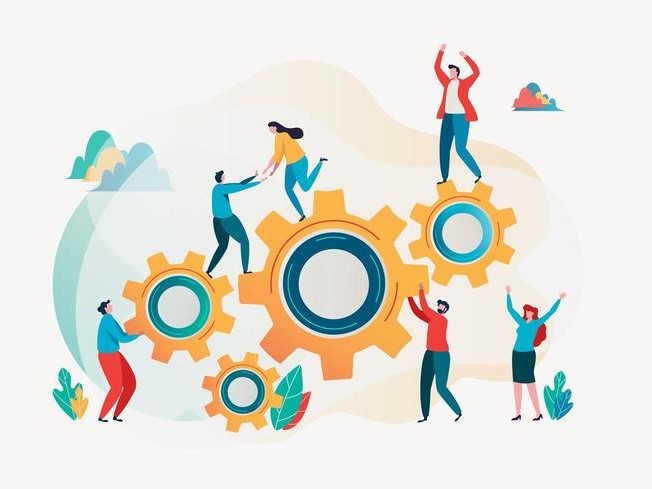Unless you’ve been living under a rock for the past five years, it will be immediately evident that there is something increasingly “off” about how we are engaging with one another. From one-on-one conversations to how societies interact while discussing broader geopolitical issues – the sheer volume and variety of aneurysm inducing outcry certainly won’t be news to most.
However, what might be more important to consider is that one of the central pillars of healthy and thriving organisational cultures is constructive dialogue and genuine conversation. So, to build thriving cultures, it is vital to look at how we got here, why better conversations are needed, and what we can do to fix these issues.
How did we get here?
There are broadly two main categories that most modern (Western) challenges fall into:
- External. The ones in the world around us, e.g., digital technologies, social media, and large-scale geopolitical divergences;
- Internal. The ones within us, e.g., lack of meaning, mental health issues, suicide, self-harm, anxiety, depression and addiction.
These two sets of challenges are fuelling each other. We increasingly feel that we are damaged internally because we feel like the world is damaged externally. When we feel damaged inside, our thoughts and emotions can control us more easily. Once we allow our emotions to take over, we act out in ways that worsen the state of the world around us.

These challenges and the ever-expanding / increasing pace of life means that many of us are in some ‘always-on‘ low-level stress a lot of the time. If we’re having a conversation, but both sides are stuck in low levels of anxiety, neither will be able to engage with one another properly, leading to friction.
Such disconnects occur because stress activates our biological threat mechanisms, and we unconsciously start to perceive each other as dangerous. Therefore, both sides will be on the defensive. When this happens, there’s no way we can properly listen to another person and express ourselves so that they want to hear us.
Why are better conversations needed?
Continually being in hyper-vigilant or low-anxiety states can be hugely damaging to both our mental and physical health. In these states, our flight-or-flight systems find themselves ‘always-on’, but at lower levels than say if we suddenly found ourselves confronted by a lion in our bathroom.
Our reasoning and judgment systems become less effective if our evolutionary defence and threat detection mechanisms are active. The resources that we use for thinking and reasoning are re-prioritised for more automatic and reactionary physical and sensory systems. These systems are only supposed to be active in response to threatening situations (e.g., ‘oh look – a snake!’) due to the high cost they carry for our bodies.
When all these threat systems are active, the conversations we have will start from a defensive position and lack the required mental bandwidth to produce effective outcomes.
To have better conversations, we must understand that we can’t divorce them from their mental health context. This detail is particularly essential since continuous traumatic stress creates polarisation, isolation and silo mentalities within individuals and organisations.

The classic symptoms of continuous traumatic stress are:
- Anxiety
- Hyper-vigilance (threat detection)
- Projection
When enough individuals within an organisation display these symptoms, they will manifest culturally within day-to-day experiences.
What can we do to fix things?
The simple answer is that we need to have conversations where we are more aware of our thinking and emotions. We need to be ready to consider other people’s positions and values in a productive rather than destructive way.
We can do several things that can help improve the awareness of what we’re thinking and feeling at any given moment. The following are three suggestions around how we can shift ourselves out of an unconsciously defensive state into one that will allow us to have better conversations.
1. BE CURIOUS.
Curiosity is a hugely powerful mindset to aim for, especially when feeling threatened, anxious or stressed. The thinking behind curiosity is that we have, on some level, accepted that we don’t know the answer to something. Therefore, being curious makes us naturally more open and less fearful as it is difficult to be curious and defensive at the same time.
2. MAKE POSITIVE ASSUMPTIONS.
As human beings, our assumptions and judgements are based on our own past experiences, projections, and expectations. Sometimes they are right on the money. Other times they can be embarrassingly wide of the mark. Making positive assumptions in others means being aware that other people have their own thoughts and feelings, and they are usually well-intentioned. To find out what they are, we need to actively listen rather than put our own thoughts onto what they are saying. Suppose we can approach conversations with this mindset. In that case, it leaves us better positioned to listen to others and think about how we want to respond.
3. LISTEN TO YOUR BODY.
If we feel threatened or anxious, our bodies will respond in several ways. Brain chemicals are released into the bloodstream, causing resources to be automatically diverted away from the brain to the body. This response enables us to deal with threats on a physical level. Jaws clench, neck muscles flex, heart rate increases, and the area around the eyes will tighten to allow the pupils to dilate. Being aware of what signals to look for and when they arise is vital to staying on top of them.

Summary
One thing we can all probably agree on is that the growing amount of noise and information overload isn’t going away any time soon. To operate effectively in this new environment, we have to learn to block out the external disruptions so that we can focus on our own internal signals, responses and narratives. If we can do this, then we will be far better placed to engage with those around us in a way that starts from a position that is open and curious, rather than closed off and defensive. Once we can do this, the conversations and dialogues needed to create healthy, high-performance cultures are far more likely to happen.
WANT TO KNOW MORE ABOUT HOW S&S CAN HELP YOU AND YOUR ORGANISATION?
- Subscribe to this podcast and check out some of our cutting edge knowledge and ideas on the insights page
- If you’re a senior leader or change agent, join one of our change communities to network and share with like minded individuals
- If you have a problem that needs solving across business change, agility, delivery or transformation and you don’t want to go down the big, traditional consulting route- get in touch




































































